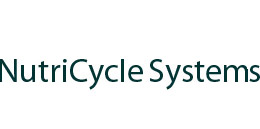Composting Toilet
Why Clivus Multrum?
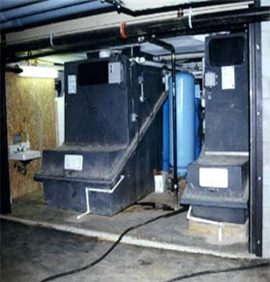 Chesapeake Bay Foundation, Annapolis, MD |
Clivus Multrum composting toilets are specified in all NutriCycle projects because of these advantages:
|
How It Works
| Clivus toilets work on the simple principle of natural, aerobic, decomposition, called “compostingâ€. In nature, composting is everywhere, and is responsible for converting organic matter into the food that keeps the cycle of life going. The composter sits below the floor and receives body products from either the waterless toilet or the foam flush toilet. With the waterless toilet, body products drop straight down a large diameter chute, and with the foam flush toilet body products “slide†down a standard drainpipe.A wide range of naturally occurring microbes and invertebrates, combined with pine shavings (bulking agent), convert the pile into compost. The moistening system prevents the pile from drying out, and the liquid removal pump sends the liquid fertilizer (composted urine) to a storage tank, for subsequent use in the landscape (nutrient recycling). The fan keeps negative air pressure at the toilets for odor free operation, and assures aerobic conditions. |
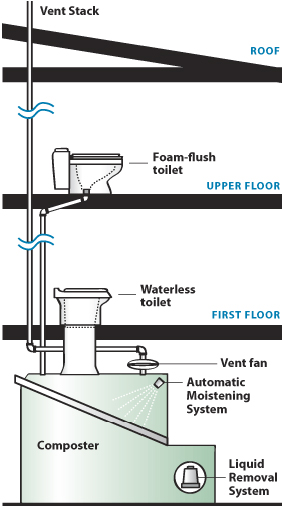 |
Go to Installations for photos of various models of Clivus composters in use in a variety of situations in the Maryland, Virginia, and Delaware area.
Go to ClivusMultrum.com for more information and examples of installations across the country.
Foam Flush Toilet
The toilet fixture with the composting system can be either waterless (large diameter chute) or foam flush (conventional drain pipe).
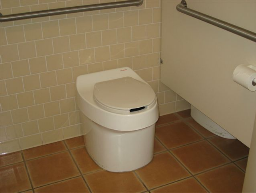 Waterless Toilet, Club House, Frederick Golf Club Waterless Toilet, Club House, Frederick Golf Club |
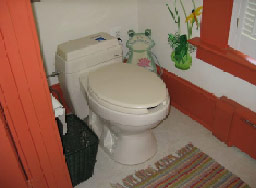 Foam Flush Toilet, Gillet Residence Foam Flush Toilet, Gillet Residence |
The waterless toilet has no moving parts, no water connection, must be installed directly over the composter, and is simple and easy to maintain.
The foam flush toilet eliminates the “dark opening†of the waterless toilet, but requires both a water and electric connection, and costs more. It looks and operates similar to a conventional toilet, and can be slightly offset from the composter (45 degree pipe slope or steeper).
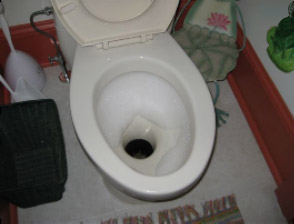 Foaming action |
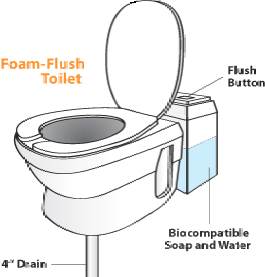 |
Maintenance
Maintenance assures proper composting that generates odor-free and safe-to-handle end products that are used in the landscape and agriculture (nutrient recycling). Lack of maintenance can lead to odors, unsafe end products, or other aesthetic problems, all of which are easily reversed with proper maintenance.
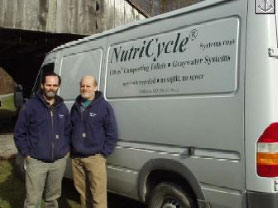 |
Maintenance Service is provided by NutriCycle Systems. Many of the Clivus owners in the Maryland, Virginia, and Delaware area currently take advantage of this service. Contact us for more information. |
| John Hanson on the left, Bob Hanson on the right, Jefferson, Md | |
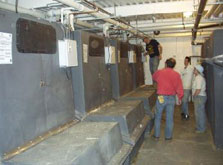 |
Maintenance Frequency is dependent on usage, and is typically twice a year. Access to the composting pile is through the access door high on the front of the composter. Pine shavings are added for the correct carbon/nitrogen ratio, and, with the aid of a special rake, the pile is mixed and checked for correct moisture content. |
| Bronx Zoo, New York City, NY | |
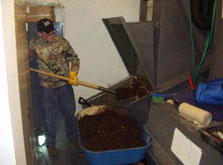 |
Compost is removed from under the front hatch and transported by wheelbarrow for use in the landscape or agriculture. |
| ThorpeWood, Thurmont, Md | |
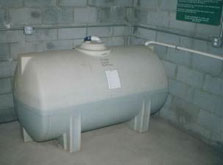 |
Liquid Fertilizer (composted urine) is stored as it is generated in the base of some models, or in a separate liquid fertilizer storage tank. Storage tanks typically need to be emptied once or twice per year. |
| Sugarloaf Citizens Association, Dickerson, Md | |
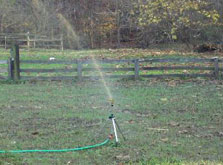 |
Nutrient Recycling occurs when the liquid fertilizer is spread over a root zone. Most of the nitrogen from domestic activity is in the liquid fertilizer (composted urine) and plant roots readily absorb that nitrogen. Typical application is by impulse sprinkler. |
| Lewis Mill, Jefferson, Md |
